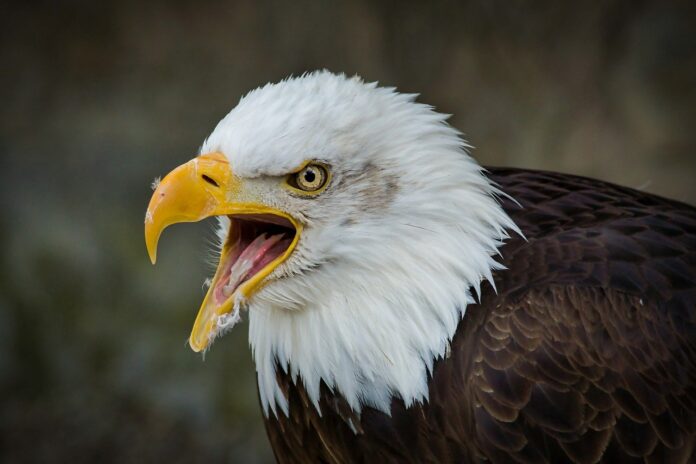In myths and legends of various cultures, the eagle symbolizes pride, courage, and love of freedom. These birds are indeed remarkable representatives of the avian predators, with no natural enemies or competitors.
- Eagles are very large birds. Their body length ranges from 75 to 90 cm, and their wingspan can reach up to 2.4 meters. They can weigh up to 7 kg, with females being noticeably larger and heavier than males. Eagles’ legs are feathered down to their toes, which end in long, sharp talons curved inward.
- The eagle’s beak is also curved, making it an unmatched hunter. Both talons and beak continue to grow throughout the eagle’s life, requiring constant wear.
- In the wild, eagles live on average up to 25 years, but some species are known for their longevity. In captivity, golden eagles and steppe eagles can live up to 50 years, with some reaching nearly 80 years.
- Eagles over 40 years old experience a hardening of their talons and beak, making it difficult for them to hunt or eat. Strong-willed eagles break their own beaks and tear off their talons, fully regenerating in about six months, while weaker individuals perish.
- Watching an eagle soar through the sky can give the impression of a slow, even hovering flight. But this is deceptive; the bird is flying at great speed, usually at an altitude of no less than 700 meters. Eagles can reach heights of up to 9 kilometers, higher than many airplanes.
- During their typical “survey” flight, eagles travel at around 200 km/h. When they spot potential prey, they can accelerate to speeds of up to 320 km/h.
- To achieve such high-speed flights, eagle wings must provide perfect aerodynamics. If an eagle loses a feather from one wing, a matching feather will fall from the other, ensuring balance. Eagles’ wings are also designed to allow them to fly even in hurricane conditions.
- While an eagle can carry and hold prey equal to its own weight, it sometimes snatches trophies mid-air from smaller birds or even attacks them. Its prey often doesn’t see the eagle coming, as it soars at a great height before diving down at lightning speed.
- Eagles have phenomenal vision, almost six times better than humans. From high in the sky, they can spot prey across an area of 12 km², and their peripheral vision covers an angle of up to 280 degrees.
- Eagles are daytime predators, but neither sunlight nor reflective surfaces hinder their ability to see small objects on the ground. Their eyes are equipped with two eyelids – a transparent membrane and a leathery layer. The membrane helps them keep their eyes protected from the wind.
- Moreover, eagles can focus on two objects simultaneously, whereas humans can focus on only one at a time.
- These birds of prey are naturally monogamous. Under favorable conditions, they form lifelong pairs. Ornithologists recorded one eagle pair that lived together for 35 years.
- Eagles build the largest nests of any bird species. They typically place their nests on the highest peaks in the area, ensuring the safety of their young and providing an excellent vantage point. Each year, the nests are partially renovated and expanded.
- Typically, eagle pairs have two chicks each year. The male spends most of his time hunting, while the female incubates the eggs and feeds and cares for the young. However, males often help with “maternal” duties.
- The stronger chick often tries to eliminate its sibling during the first two months of life. If both survive, they stop competing. By three months, they start hunting on their own.
- Sometimes, an eaglet is hesitant to leave the nest. In such cases, one of the parents will perch nearby with a tempting piece of food, encouraging the reluctant fledgling to take the leap.
- In many cultures, the eagle has been a symbol of absolute power. People who took on the image of an eagle considered themselves special and invincible. For example, the ancient Aztecs wore cloaks adorned with eagle feathers like wings and attached eagle talons to their sandals.
- The only potential enemy of eagles is humans. People are pushing these freedom-loving, independent birds out of their natural habitats. While there are still many areas on Earth where eagles can thrive, humans must take care to protect their populations.
